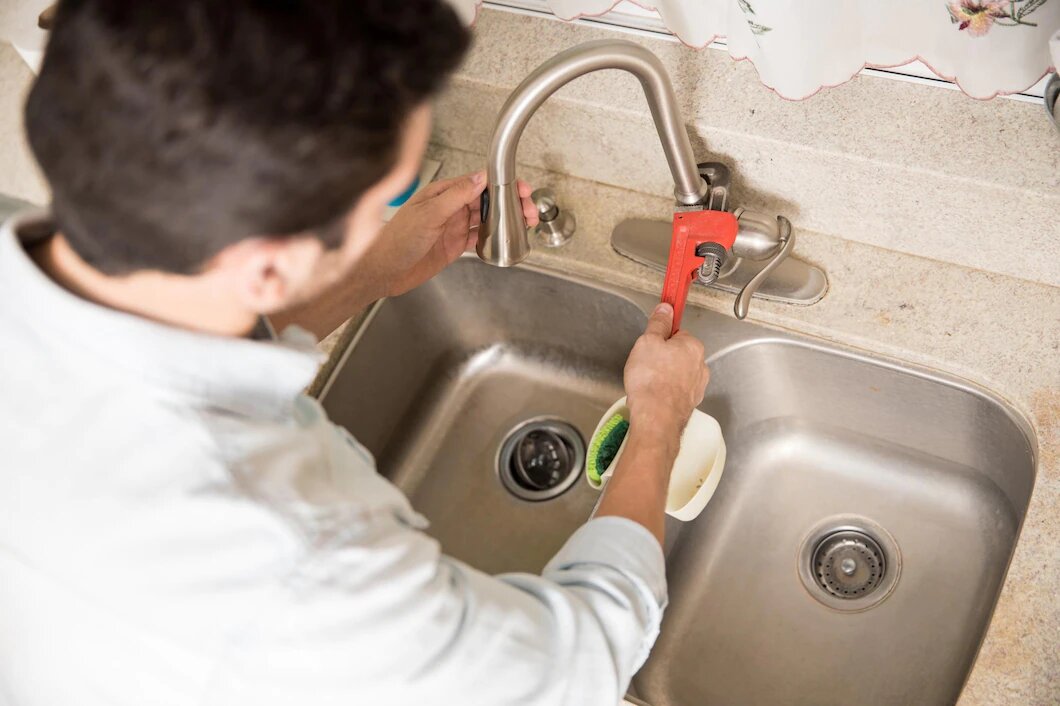In practically every home inspection, the home inspector will see at least one, if not more, water saddle valve. A saddle valve is a self-piercing water valve for do-it-yourself connection of a ¼” supply line to existing water pipes in the home. These valves are universally used for ice makers and humidifiers and are typically included in hookup kits. They are widely used because they are cheap and fast, and simple to install, but they are just plain wrong.
The saddle valve is installed by placing a saddle or clamp around the water pipe with a rubber seal, then tightening down against the pipe. When the self-piercing valve is tightened or screwed in all the way, a needle valve pierces the pipe creating a very small hole. Then when backing off the valve, water begins to flow. No cutting of pipes is required, no soldering, no special tools… It’s a DIYer’s dream.
In many Municipalities, there is nothing that prohibits the use of these types of valves; however, if you live in St. Louis County, MO, the county no longer allows their use.
Why you shouldn’t use them
They are prone to leak over time, the rubber seal will eventually deteriorate, and they clog up as calcium deposits build up at the small opening stopping the flow of water. Once they start to leak, there is no easy fix. The right fix is to cut them out and replace them with a permanent valve. Often, we will see three or four water saddle valves lined up in a row in older homes, with only the most recently installed one functioning. When one stops working, they add another.
If you are going to use one, it should only be used on copper pipe and never on plastic of any kind unless it specifically specifies it can be used with PVC, CPVC, or PEX piping. Keep in mind that most appliances now recommend the use of a full port valve, and the use of the saddle valves may void your appliance warranty.
How to replace a saddle valve
In my house, I have a couple of old ones that are no longer in use. They aren’t leaking, but I thought describing the process of how to remove them would be a good addition to the article. I am not a plumber, and this is the complete guide to replacing them, so if you’re not comfortable with plumbing or it’s new to you, call a professional.
To replace or remove a saddle valve on an existing water line, make sure you have all of the plumbing parts you need on hand. If you’re comfortable soldering copper pipe or tubing and you already have the equipment to do it, this project will cost under $20. If not, the cost is more because you’ll likely be using SharkBite or push-on fittings. These types of fittings are becoming more popular with DIYers, and they have been proven to be reliable.
You’ll need to turn the water off first and drain the water pipes. Next, remove the old saddle valve and cut the pipe on each side of the pierced hole from the old valve. You’ll need to measure to make sure you’re cutting the pipe in the correct location based on the new fitting (valve, tee, or repair coupling). You’re going to bridge the gap with the new valve or fitting. If you are soldering, you’ll need a propane torch, flux, and solder. Flux is a compound used as part of the soldering process. It is applied to the part of the copper pipe where the solder must make a bond. If you’re using a push-on fitting or valve, you won’t need any special tools other than a tubing cutter.
Recommendation
Always replace saddle valves with a permanent full port valve. These are available with compression, push-on (also known as shark-bite), and sweat-on valve connections, and as always, we recommend work by a qualified plumber.
